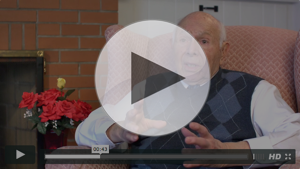This past April 26th www.homecaredaily.com reported on the case of Martha Edens, a former Richland County Republican Party Chairman, who needed 24/7 care from a health care aide at her home. Martha had a number of ailments, including dementia and limited mobility, and her family paid $9,500 per month for around-the-clock care so there would be a caregiver with Ms. Edens at all times.
The family had also installed hidden security cameras to keep an eye on their 88 year old mother. One day while in the bathroom, the caregiver on duty left Martha alone and she fell, suffering 2 broken legs. No one was notified of this event, including emergency services, and she remained in bed for 2 days. At that point a family member visited, notified emergency services and Martha was diagnosed in the emergency room with compound fractures of her legs. The home video showed that Martha walked into the bathroom and then never walked again after the injuries. Ten months later she died as a result of those injuries according to the ensuing lawsuit.
Bathrooms are the most dangerous place in the house (or healthcare facility) for elderly and mobility-challenged individuals. Stats show that more than 1 in 3 seniors over age 65 fall each year and The National Institute on Aging (NIA) states that 80% of these falls are in the bathroom. The Centers for Disease Control (CDC) states that 1 out of 5 falls cause serious injuries such as broken bones or a head injury and falls are the most common cause of traumatic brain injuries. The CDC also noted that when adjusted for inflation, the direct medical costs for fall injuries are $34 billion annually*
There are many home modifications that can be done to try and prevent falls in bathrooms although some falls are a result of medical conditions, medication side-effects, balance issues, visual problems and compromised mobility. Many state and local governments have education and/or home modification programs to address preventable falls. Local health departments, senior affairs offices and agencies on aging are great resources for information/programs. Having regular visual exams and speaking with your healthcare practitioner about possible medication side effects are always helpful. In addition, it would be advantageous for seniors to participate in strength and balance exercises on a regular basis and Tai Chi has become a popular option for this.
Another wonderful option for someone who is weak or has compromised mobility is Next Health’s AgileLife TMS as not only can it transfer someone from the bed to a docked wheelchair (and back) and re-position someone in bed, the wheelchair can also convert to a commode negating the need for regular trips to the bathroom (and also negating the need for manual or sling lifts which many individuals and caregivers dislike).
For additional resources and publications on fall prevention, check this CDC link:
http://www.cdc.gov/homeandrecreationalsafety/falls/pubs.html
*Stevens JA, Corso PS, Finkelstein EA, Miller TR. The costs of fatal and nonfatal falls among older adults. Injury Prevention 2006;12:290–5.
Written by: Christine Dunster, Clinical Director, Next Health

